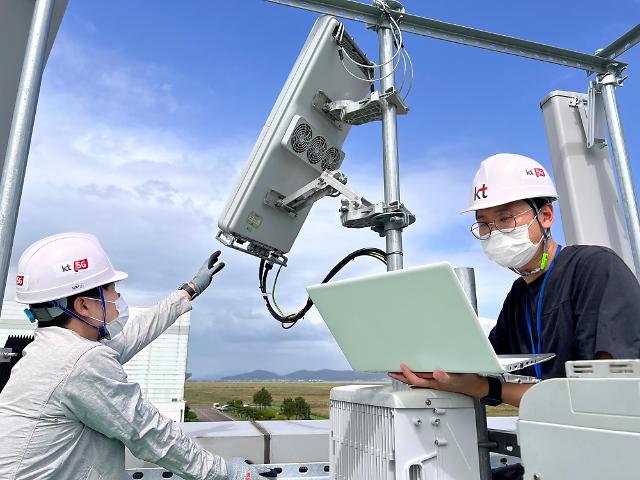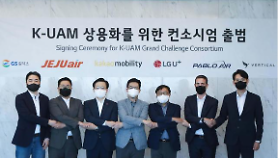
[Courtesy of KT]
SEOUL -- South Korea's top telecom company KT has completed the construction and performance verification of a 5G network exclusively for urban air mobility (UAM), an ecosystem involving flying passenger vehicles in urban areas. UAM Team Korea, a public-private consultative body, aims to commercialize drone taxis in 2025.
The Seoul government has worked out a "K-UAM Grand Challenge" program to demonstrate the safety of air taxis and test traffic management functions in two stages. In the first stage, demonstration flights will be conducted at a flight test center in the southern seaside county of Goheung to verify UAM infrastructure and communication relay platforms. The second-stage demonstration will be conducted in urban air corridors.
Air taxis will fly through corridors, or known as virtual channels in low-altitude airspaces, to prevent accidents and improve the safety of pedestrians on the land. KT's 5G UAM network will be used in the first-stage demonstration project.
With optimal 3D coverage design and network slice technologies, KT will provide stable 5G services at the altitude of UAM operation from 300 to 600 meters. "The establishment of this aviation network is the first step to lead the market for UAM, which is attracting attention as future mobility," KT's infrastructure research and development lab head Lee Jong-sik said in a statement on October 5.
Unlike ground coverage optimization, 3D coverage design technology optimizes 5G network coverage by modeling beam patterns in the section of 3D UAM operation to prevent coverage holes or interference.
5G network slicing is a network architecture that enables the multiplexing of virtualized and independent logical networks on the same physical network infrastructure. Network slice technology guarantees the quality of communication services by separating traffic for special and general purposes. For the reliability of UAM control and data transmission, KT's network ensures transmission quality even in severe network load situations.
KT will provide its network to UAM manufacturers and operators to accumulate optimal network profiles, design, and operation know-how. From 2023, satellite communication and quantum cryptography communication technologies will be applied to UAM networks. Data encoded in a quantum state is virtually unhackable without quantum keys which are basically random number tables used to decipher encrypted information.
Copyright ⓒ Aju Press All rights reserved.



